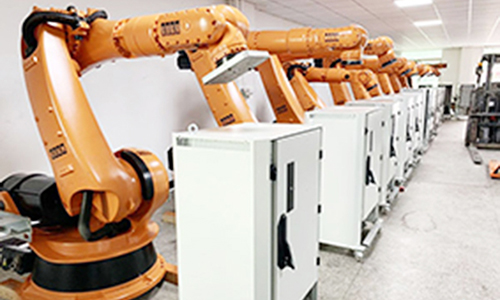The control method of industrial robots is now the most widely used robot in the market, which is also the most sophisticated robot. Industrial robots can be widely used because they have a variety of control methods. According to different tasks, they can be mainly divided into four control methods: point control method, continuous track control method, force (torque) control method and intelligent control method, The following describes the key functions of these control methods.
(1) Point to point manipulation (PTP) This manipulation method only manipulates the position and pose of the end effector of an industrial robot at some regular discrete points in the workspace. During the control, only the industrial robot is required to be able to move quickly and accurately between adjacent points, and no rules are made for the motion track reaching the target point. The positioning accuracy and the time required for movement are the two primary skill indicators of this control method. This control method has the characteristics of easy realization and low positioning accuracy requirements, so it is often used in loading and unloading, handling, spot welding, and inserting components on the circuit board, etc., which only require the end actuator to adhere to the accurate position and orientation at the target point. This method is relatively simple, but it is difficult to achieve the positioning accuracy of 2-3 um.
(2) Continuous track control method (CP) This control method is to continuously control the position and pose of the end effector of the industrial robot in the work space. It requires that it move in a certain precision range strictly according to the predetermined track and speed, and the speed is controllable, the track is lubricated, and the movement is stable to complete the task. Each joint of the industrial robot moves synchronously, and its end effector can form a continuous track. The primary skill index of this control method is the track tracking accuracy and stability of the position and pose of the end effector of the industrial robot. This control method is usually used for arc welding, painting, deburring and inspection robots.
(3) The force (torque) control method requires that the applied force or torque is necessary and appropriate in addition to accurate positioning when assembling, grasping and placing objects, and it is necessary to use the (torque) servo method. The principle of this control method is basically the same as that of the azimuth servo control, except that the input quantity and response quantity are not azimuth signals, but force (torque) signals, so a powerful (torque) sensor is necessary in this system. Sometimes, sensing functions such as proximity and sliding are also used for adaptive control
(4) Intelligent control method The intelligent control of a robot is to obtain the common sense of the surrounding environment through sensors and make corresponding decision plans according to its internal common sense library. Intelligent control skills are selected to make the robot have strong environmental adaptability and self-learning ability. The development of intelligent control skills depends on the rapid development of artificial intelligence such as artificial neural networks, genetic algorithms, genetic algorithms and expert systems in recent years. Perhaps this form of manipulation is really a bit of "artificial intelligence" for industrial machine talents, but it is also the most difficult to control well. In addition to algorithms, it also depends heavily on the accuracy of components.
In terms of the essence of control, industrial robots are still at the bottom stage of spatial positioning and control in most cases, without much intelligence. It can be said that only a relatively sensitive mechanical arm is still a long way from "human".



